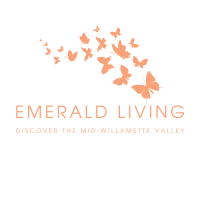Choosing the right countertop is an important aspect of kitchen design that goes beyond the aesthetic. Your lifestyle is ultimately more important than your decorating style when it comes to picking the right type of countertop. When deciding on the best one for you, and ask yourself a few important questions. Do you spend a majority of your time cooking in the kitchen? Do you prep for weakly meals? Do you love to bake? Would a small imperfection or crack bother you, or would you even notice? Every type of countertop has its pros and cons. Fitting those with your unique use and style is key.
Do you insist on a natural stone or would a manufactured, composite material fit the bill even better? Do you really want a stone countertop, if you understood its properties? A specific color or style choice may not fit the material you desire, which could result in some regrets.
Whether you have a modern, contemporary, or even traditional style kitchen, there is a match to function and style. Here are some different types of countertops to ponder.
Marble
Marble countertops have come into prominence in recent years, maybe because marble is still the top in terms of aesthetics. It’s also included in high-end new development. Here the reason why. It’s a natural stone that instantly elevates a kitchen. Provides a clean, contemporary feel. Bright white marble finish is king, but marble countertops are available in other colors as well. Shades of gray, brown, taupe, and even green are now possible, and unique. Marble is a living finish, and will patina over time and develop it’s own personality.
Cons – Marble is softer than other natural stones, so it’s important to be careful and invest in proper cutting boards. If you cut directly on marble, it will scratch. It’s porous, so temporary spills easily become permanent stains. Accidental red wine and lemon juice splashes need to be cleaned up fast. But luckily, technology has made marble more durable with new sealants that make this notoriously risky material less problematic for everyday family use.
Pros – Marble maintains a naturally low temperature, making it ideal for people who enjoy baking. Home bread bakers buy marble slab because it’s a great surface to roll out and shape dough. Some kinds of marble, such as Carrara, can be budget-friendly.
Quartz
A great investment for resale of homes, there are an increasing number of quartz countertops coveted by buyers. Some of my clients are requesting them. Quartz countertops aren’t made of 100 percent quartz, rather they are a composite stone engineered from natural quartz combined with a resin binder. They are a great way to get the look of natural stones without the worry that comes from marble or granite.
Cons – Providers like Caesarstone are providing the coveted non-glossy, honed marble appearance without the down-side of other softer materials. Great for large kitchens where finding a matching slab/set of stones may prove prohibitive due to cost or availability.
Pros – Durable and built to really withstand almost anything you can throw at it. Quartz is non-porous, so it never needs to be re-sealed, and is incredibly hard.
Granite
Granite countertops have been a favorite for many years because it’s a natural stone with great durability. Granite countertops require very little maintenance and are easy to care for, but it’s best to avoid harsh cleaning products. They only require a little soap and water. Some granite can be more porous and my require periodic sealing in order to prevent stains.
Cons – Granite stone is so hard, that it will dull your knives.
Pros– Granite is available in a range of dark and light colors with all sorts of flecks and variations. A unique feature of granite is that it can be cut with a variety of edge choices, including square, beveled, ogee (which is an s-shape), as well as half and full bull-nose. It is heat-resistant, so you can place pots directly from the oven on the granite counter.
Concrete
Concrete countertops are a wonderful way to elevate a farmhouse chic kitchen or add a special touch to an industrial, modern kitchen. They can even be made into a waterfall countertop. Concrete has a really bold, striking look. Commercial concrete countertops are available. Keep in mind that concrete can take up to 28 days to dry completely, so it’s not ideal if you’re working on a tight schedule.
Cons – Concrete comes in two types–cracked and haven’t cracked, yet. As the home settles or for no apparent reason, even these countertops can crack. They are easily repaired, but if you want a countertop that will look perfect for years to come, it’s probably best to choose something else. Needs to be sealed.
Pros– Comes in a DIY kit, and many variations of colors. Practically indestructible.
Butcher Block
Butcher block is an affordable alternative to stone countertops. It’s made from pieces of wood bonded together to form a larger slab. These natural pieces can be made from all types of wood, including cherry, maple, oak, walnut, and even teak, even bamboo is starting to come into favor because it is both eco-friendly as well as sustainable. The finish you choose depends entirely on your unique style. Designers have been using butcher block counter tops on accent islands as a center piece while using other materials on the rest of the kitchen.
Cons – Butcher block countertops can be sealed or unsealed, however, once the wood is sealed, it’s no longer appropriate for food prep and must be used with a separate cutting board. This material is also porous, so spills must be sopped up quickly or you risk staining the wood. Unsealed butcher block countertops must be oiled twice a year, which is a commitment.
Pros – Butcher block is also the only type of countertop surface that allows for direct cutting and slicing because it is essentially a giant cutting board. Let’s face it, if it’s a wood look you love, this is perfect.
Soapstone
Soapstone is a natural stone that is usually from the Appalachian Mountains, or imported from Finland and Brazil. It has a high percentage of naturally occurring talc, which gives the surface a soap-like or soft feeling. It requires minimal maintenance and is entirely non-porous, so it is stain-, bacteria-, and heat-resistant. It also has a unique look to it and is available in a variety of gray shades with blue or green undertones. The natural, marble-like veining varies from stone to stone. While soapstone is susceptible to damage, that only makes the surface more beautiful, giving it an antique-looking patina. In fact, it is recommended that homeowners oil the countertop once a month for the first year to allow the surface to oxidize and for the patina to develop.
Cons – Natural patina can look “worn” to those that like a crisp clean look.
Pros – Non-porous, so no maintenance and is heat resistant. It also has a unique look to it and is available in a variety of gray shades with blue or green undertones. The natural, marble-like veining varies from stone to stone. While soapstone is susceptible to damage, that only makes the surface more beautiful, giving it an antique-looking patina. In fact, it is recommended that homeowners oil the countertop once a month for the first year to allow the surface to oxidize and for the patina to develop.
Stainless Steel
Stainless steel has been a popular choice for commercial kitchens because it’s easily sanitized because it’s non-porous. It’s now become a trend in residential settings for a chic, industrial look.
Cons – Stains need to be cleaned quickly, the longer you leave a splash or spill, the harder it becomes to clean. Stainless shows fingerprints and water spots, so if you have young children it may not be the best choice. Products formulated specifically for this surface, will help to combat these issues. Stainless steel is easily scratched and dented which can be repaired, but would require professional services.
Pros – Stainless steel is incredibly durable and entirely non-porous.
Laminate
Laminate countertops were a staple in the 80s and 90s. They were branded by Formica, and while older laminate countertops can look dated, recent updates to laminate countertops are different. Laminates of today can give the look of more expensive materials like wood and stone for a fraction of the price.
Cons – Laminate counters are easily damaged by heat, forget a trivet and the the entire countertop is destroyed. These counters aren’t likely to add resale value to the home.
Pros – Low cost, nonporous and easy to clean with simple soap and water. It is a great way to stay on budget for small rental properties, a basement bathroom, or guesthouses.
Tile
Tile countertops were very popular in the 70s and 80s, and they’re starting to make a comeback. If you’re not afraid of some DIY and need to stay on budget, tile is an option worth considering. Tile comes in a variety of sizes and shapes from classic squares to subway tiles and even trendy hexagons in different materials, including porcelain, ceramic, and even natural stones. Granite, quartz, and marble tiles are more affordable and easier to accomadate most spaces when compared with large slabs.
Cons-Maintenance and durability of tile depends on the material, but all tile countertops have one issue, which is that grout lines are difficult to keep clean and fresh looking.
Pros – Easy project with outstanding results, and grout can now be colored to match your taste and style while a darker colored grout like gray or black tends to stay clean looking longer.
Solid Surface
Made of a combination of acrylic and resin, solid surface materials, which are often called by their brand names Corian or Avonite, make great middle-tier options for countertops. A seemingly endless amount of styles are available, including some great dupes for granite and marble.
Cons – Solid Surfaces aren’t heat-resistant, so make sure to have plenty of trivets on hand.
Pros – Stain-resistant, seamless, and most damage can be sanded out.





